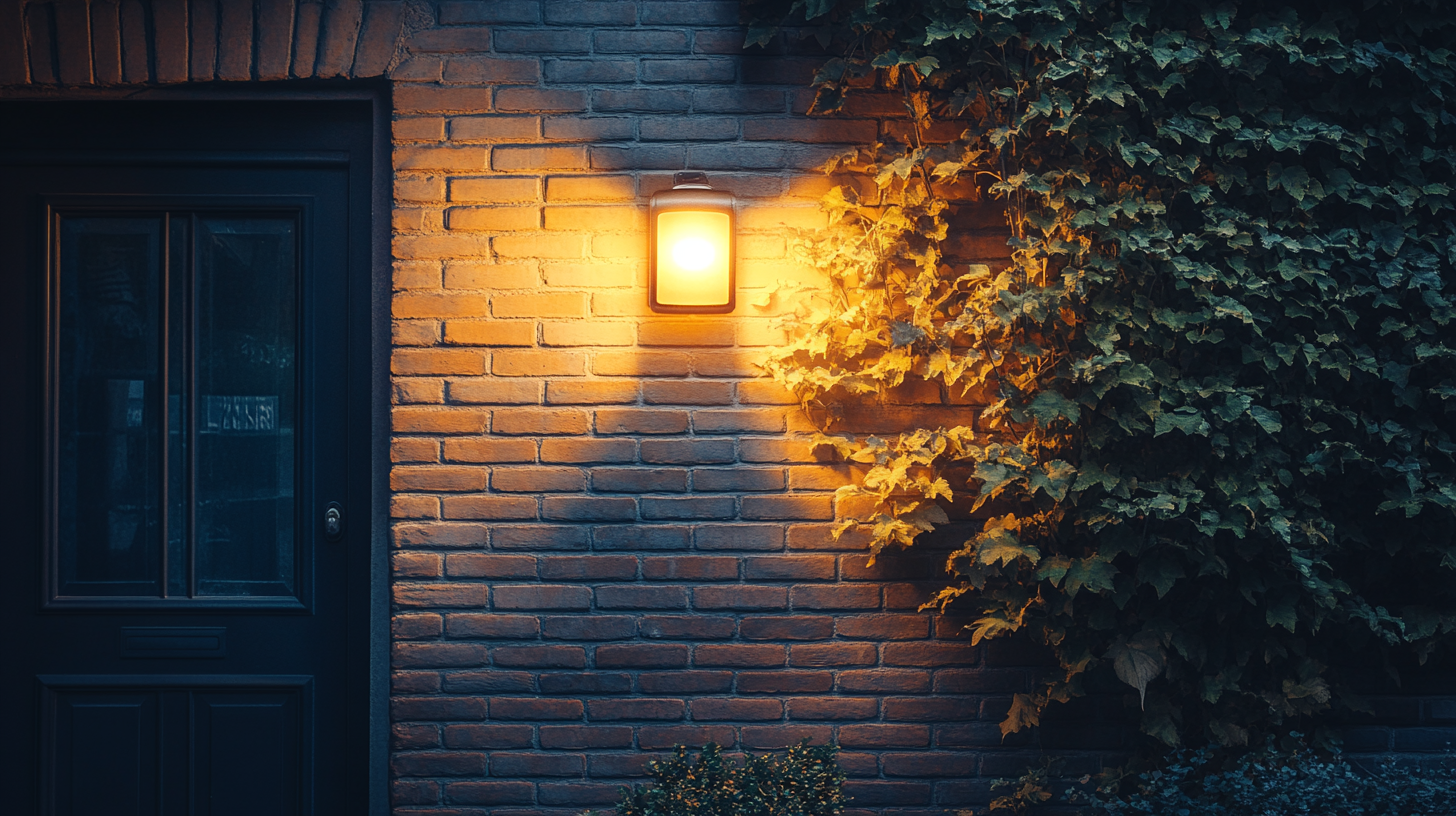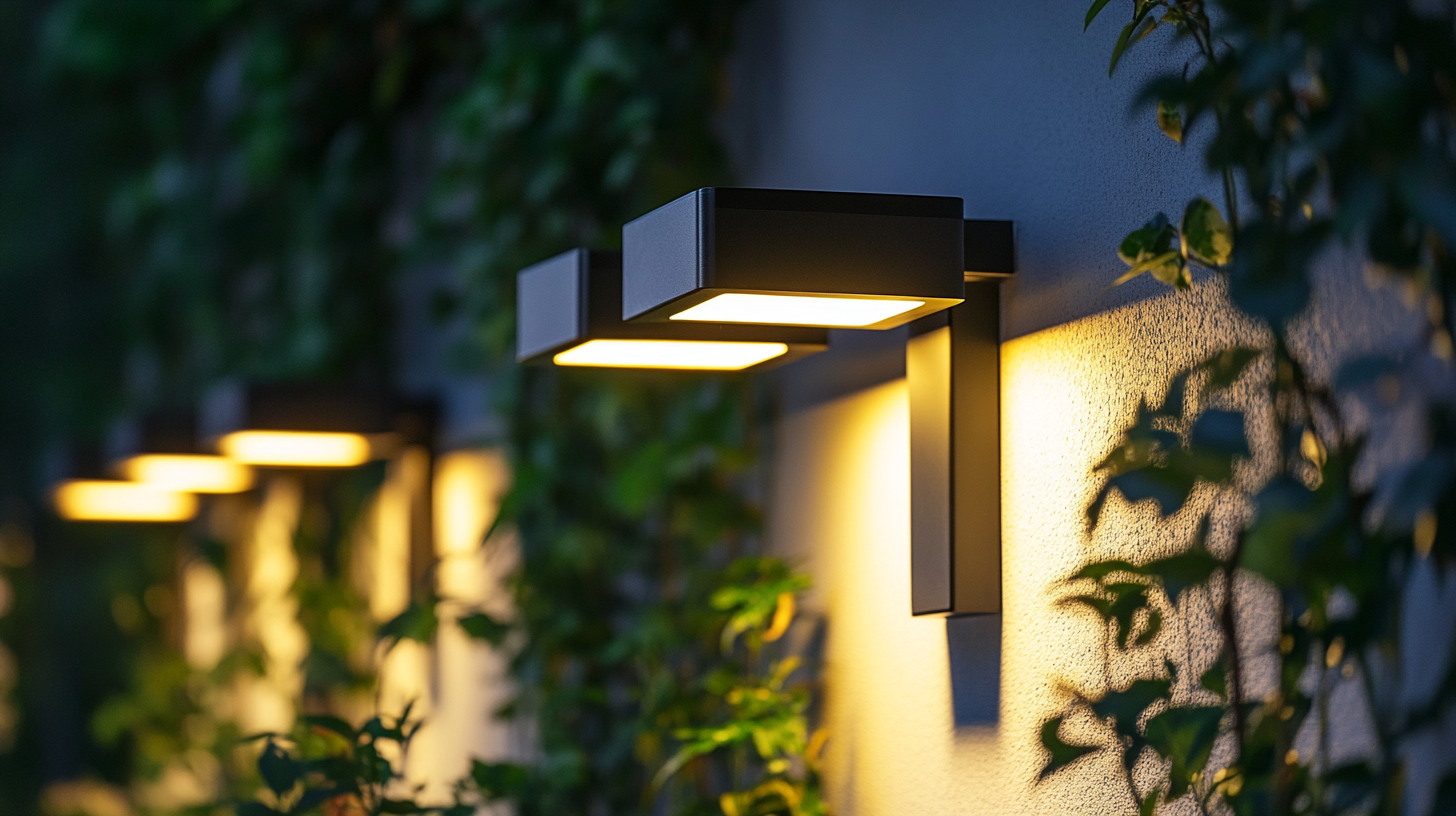2025 Solar Wall Lights Trends: Top 7 Innovations Shaping Global Markets
Solar energy solutions had a boom in franchises these last years. In the past, utility-value provided more advantages to bejenks than to commercial sectors, especially in new inventions to develop technology-savvy, eco-friendly consumers. Now they shine and make their name-the latest among pioneers of the installations in homes and businesses, stand by their energy-efficient provision while dramatically dropping the associated costs. Even with all the highly anticipated trends in 2025, it is crucial to keep discovering what's new in Solar Wall Lights that would redefine outdoor lighting and add to the beauty located indoors.
As we walk through the top seven trends that would dominate futures in the global market in Solar Wall Lights, we shall see this combination of functionality, design and sustainability. From the illusion of smart technology to beautiful displays, these innovations push movement even further towards green living and energy efficiency. Adoption of these innovations will not only decrease carbon footprints but would also add property value to your homes as well as its appeal. So here we are to talk about the brilliant future of Solar Wall Lights and the changing face of their environment.

Emerging Smart Technology in Solar Wall Lights for 2025
Now, with an eye toward 2025, the next generation of solar wall lights is being influenced heavily by new smart technologies. Besides the obvious addition of new features in solar lighting, these technologies are redefining how we engage with outdoor space. With advancements in IoT, the solar wall lights are gradually becoming much more interlinked so that the user can control and monitor the lighting system from smart devices. This interconnectivity helps homeowners and businesses even more to conserve energy and customize their lighting according to their needs, thereby creating an environment that is highly eco-friendly. Additionally, the integration of smart sensors has transformed the form and function of solar wall lights. The sensors help detect motion, ambient light conditions, and weather conditions, adjusting brightness and functionality automatically to ensure greater efficiency and safety. An example would be dimming the lights during daytime and giving full brightness when someone is approaching the light, thereby achieving an optimal balance of visibility and energy saving. AI analytics can further help to assess energy consumption patterns and deliver intelligent solutions for outdoor lighting. Due to something like sustainability being in vogue for some time now, advanced battery technologies and solar panel efficiencies are well incorporated into solar wall lights. Innovations such as integrated storage systems ensure that solar energy has been optimally captured and used, thereby reducing dependence on conventional sources of power. All these advancements promote solar wall lights in terms of performance and are in line with global crusades for the creation of greener, sustainable living spaces. If these trends come into play, there is a brighter and smarter future in store for solar wall lights.

Sustainable Materials: The Green Revolution in Solar Lighting
The green revolution in solar lighting is gathering pace, particularly in an age of developing materials for being sustainable. As we move to 2025, focusing on using sustainable materials in solar wall lights not only enables the function of the product but also reduces the environment's overall negative impact. One recent study indicates an intensity reduction in carbon emissions related to build and light with increased usage of eco-friendly materials such as biobased plastics and recycled materials.
The solar revolution is witnessing unprecedented growth in 2023, with over 650,000 equipped homes expected by the latest estimates. The advances brought by scientific research and the increasing demand for cleaner energies trigger this rapid growth. Eco-power boards are among such innovations that redesign solar lighting without compromising on beauty.
Thus, the construction sector is certainly very important in the fight against climate change as it accounts for 38% of the global CO2. Integrating such technological materials into building design would go a long way to achieve greener urban designs. Industry transition shows that sustainable materials will not only make wall lights from solar energy but also apply to more wide-ranging applications in architecture; it is a necessary turning point about the betterment in eco-conscientious energy and construction use.

Design Trends: Aesthetic Innovations in Solar Wall Light Fixtures
The soon-to-be-scaling trends for solar wall light design in 2025 accentuate aesthetic innovations. Designers are massing towards minimalism and sustainability, crafting products that seamlessly fit in with the mode of contemporary urban landscape architecture and give effective outdoor light. The Global Solar Lighting Market report states a study with an estimate for over 20% annual market growth, reflecting a burgeoning demand for contemporary solar fixtures that do lots of things but provide light-they are part of the enhanced modern architectural landscape.
Smart tech is fast becoming the other aesthetic innovation that determines what else solar wall lights can do. The designers are equipping them with smart sensors and adaptive lighting that reacts to environmental conditions, thus augmenting their usefulness and energy-saving capabilities. The International Energy Agency states that solar applications are, in fact, going to be deeply embedded within urban energy solutions, enhancing not only functionalities but also stimulating cost savings for homeowners and municipalities.
Additionally, color trends have become more reflective of societal values, with a growing interest in warmer hues and materials left in their natural state. Studies have shown that consumers are embracing designs that elicit comfort and a closer connection with nature, which enhances their outdoor experience. Hence, as we go into the future, all things considered, aesthetics and technology will break new standards for the solar wall lighting market and give innumerable opportunities for young designers.

Enhanced Energy Efficiency: The Future of Solar Power Systems
Solar transformation is thus gradually gaining importance as the year 2025 draws near, especially in view of efficiency. The ultimate aim towards improved efficiency in solar power systems is no trend; rather, it seeks to change the very way in which we harness and utilize solar energy. Reports from the International Energy Agency connotated the rise of the global solar market to unprecedented levels, translating to around 5,000 GW probably by 2025, hence the emphasis on innovating energy generation.
Key innovations occurring in solar wall lights showcase this changing trend, particularly through advancements in photovoltaic technology and battery storage systems. Recent reports indicate that in newer solar panels, sunlight-to-electricity conversion efficiency has been recorded at values nearing 23%, showing an impressive increment in that parameter over the past ten years. Improvements in battery efficiency mean the energy collected on a sunny day can now be stored for use during the night-a capability that provides illumination for outdoor applications, thereby increasing the utility of solar lighting solutions.
In addition to performance-based improvements, integration with intelligent technology is reshaping the market. IoT-enabled devices that maximize energy consumption effectively based on real-time behavior patterns can leverage the functionality and efficiency level of the solar wall lights. It is projected that by 2025, around 30% of all solar installations are expected to have some level of automation, driven by the demand for smart home solutions, which focus on energy savings and sustainability. Thus, this advancement in design and functions depicts a bright future wherein solar energy will not only light up our lives but will efficiently and intelligently do so.
Integration with Smart Home Systems: Creating a Connected Environment
This goes beyond to the evolution of solar wall lights being in tandem with the development of smart home systems. It strengthens the demand for much more integrated and connected surroundings. The homeowners are on the lookout for lighting systems that not only provide light but also help in maximizing the function and efficiency of their living space. Solar technology incorporated with smart systems enables homeowners to avail the benefits of sustainable energy while engaging smart features like automated scheduling, smartphone remote control, and real-time energy monitoring.
One of the exciting innovations is that solar wall lights can now communicate very well with other smart home gadgets. For example, the lights can be programmed to go on and off with smart security systems, adding extra convenience and security. Homeowners can have their lights set to illuminate pathways or entrances by the time security cameras detect movement so that any potential intruder is reduced while keeping power at bay. It is this good synergy that not only maximizes safety but also enhances the user experience through customizable settings and smart integration.
Further, instantaneous advancements in artificial intelligence are about to determine how solar wall lights will operate within this smart home ecosystem. AI-based algorithms could learn from household routines and modify lighting according to their preferences and performance. Think of a situation where your solar wall lights switch on from dim light to bright light as you walk home at night, creating a nice atmosphere while conserving energy. As these innovations evolve, one expects solar wall lights to be a prime mover toward smarter, more connected surroundings where sustainability is cherished and user comfort paramount.